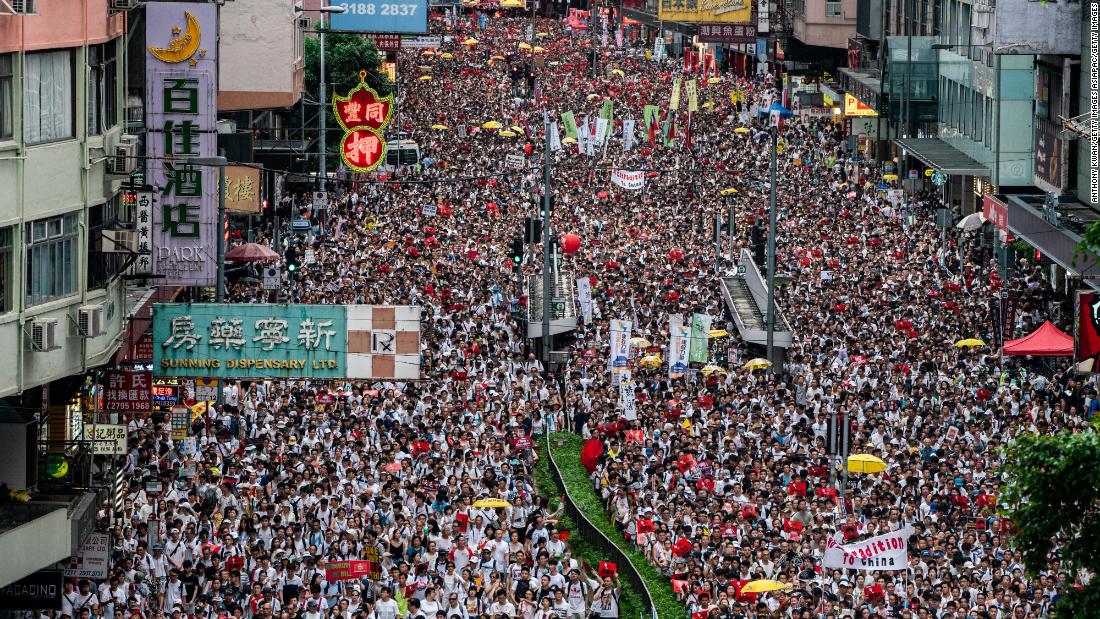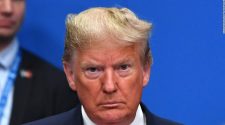Then came the extradition bill.
That protest was motivated, in part, by fears the city would be subject to a China-style rule of law, or rather lack thereof. Fear of China is what drove people to the streets Sunday, too.
Sunday’s protest, however, wasn’t just remarkable for its size — but also its demographics. While the Umbrella Movement galvanized Hong Kong’s youth and was mainly student-led, it wasn’t popular with everyone, and some in the city felt it was disruptive to business.
Opposition to the extradition bill, however, came from a wider cross-section of society.
Lawyers, business people, middle-class, middle-aged first-time protesters were all on the streets of Hong Kong on Sunday.
Their presence showed that while the fight to extend Hong Kong’s freedoms may have fizzled, the willingness to battle to protect existing rights is as strong as ever.
Historic protests
The 2003 anti-sedition protests were a defining moment for the city’s opposition movement.
The bill could have seen anyone convicted of treason, sedition, secession or subversion against China jailed for life, and — like Sunday’s protest — attracted huge opposition from many sectors of Hong Kong. The huge march was followed by multiple government resignations, and the bill was dropped, never to be revived.
But while the 2003 protests are remembered as being against the sedition law, they took place on July 1, the anniversary of Hong Kong’s handover from British to Chinese control and an annual day of protests.
Sunday’s march was about one issue alone — saying no to the extradition bill — but whether it can repeat the success of the 2003 protest is perhaps up for debate.
During a press conference Monday to address the protests, the city’s Chief Executive Carrie Lam defended the bill, saying “additional safeguards” have been made to protect human rights.
“We will make sure that all these additional safeguards are legally binding,” she said.
A second reading is due to take place on Wednesday, and the government has expressed its intention to pass the bill before the summer break.
What happens next?
Like Leung, Lam’s days may be numbered. While she is unlikely to resign, many observers feel the furor over the extradition bill will put Beijing off appointing her for a second term, preferring a leader untainted by the current political crisis.
While Lam claims it is her initiative, Beijing’s role in all of this is unclear, due to the incredibly opaque nature of Chinese politics.
Both the Beijing and Hong Kong governments may feel they are too far gone with this matter to back down, even in the face of such concerted opposition as seen Sunday — Lam especially has staked her reputation on the bill.
Pro-democracy lawmakers will do everything they can to derail the bill when debate resumes on Wednesday, with a 1-million-strong mandate to increase their efforts, which have previously dissolved into scuffles in the legislature. But they lack the numbers to actually vote it down, and no pro-government lawmakers have yet said they will vote against the bill, guaranteeing its passage.
In that case, the sight of tens thousands of people in Hong Kong’s streets may become familiar once again, courtesy of a protest movement the government has inadvertently reinvigorated.


















